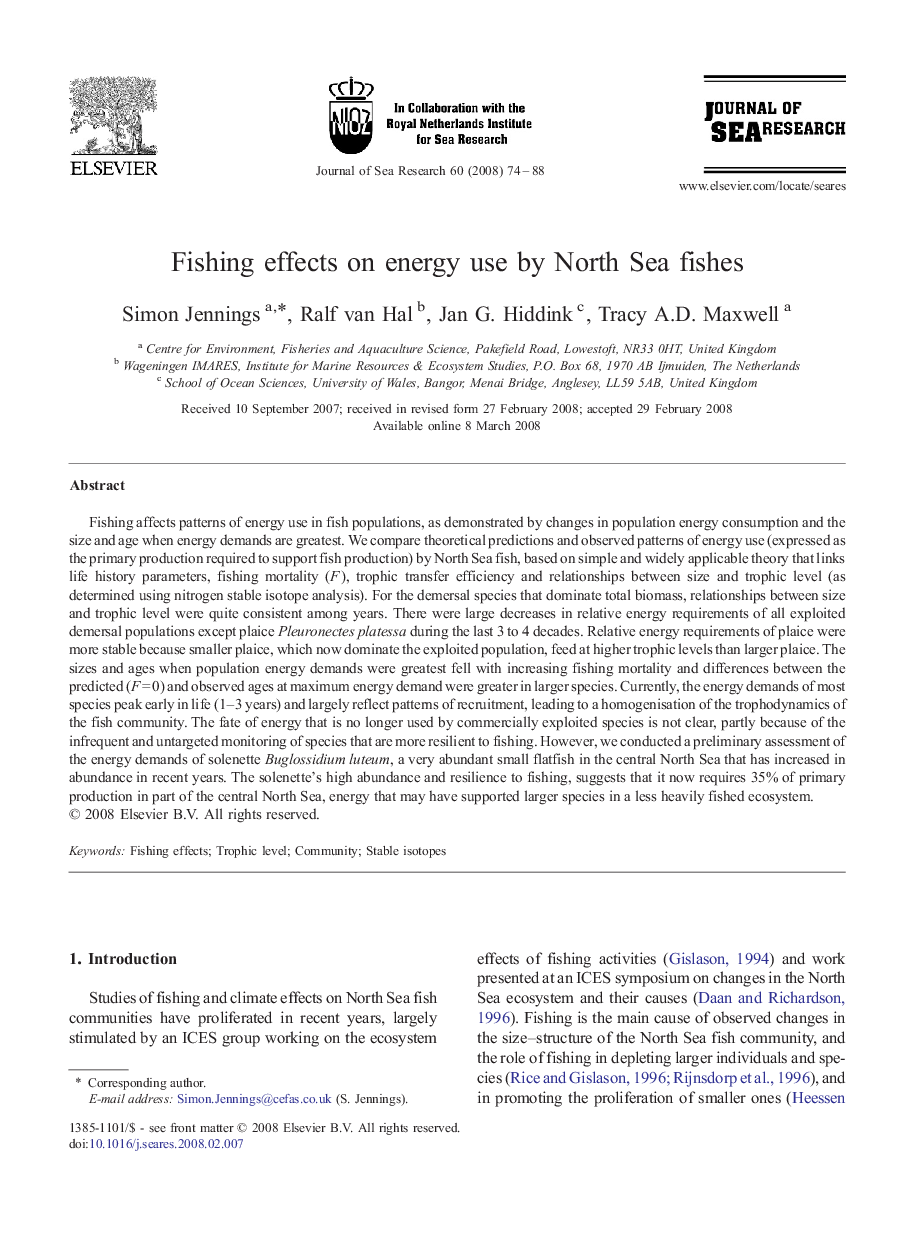| Article ID | Journal | Published Year | Pages | File Type |
|---|---|---|---|---|
| 4550341 | Journal of Sea Research | 2008 | 15 Pages |
Fishing affects patterns of energy use in fish populations, as demonstrated by changes in population energy consumption and the size and age when energy demands are greatest. We compare theoretical predictions and observed patterns of energy use (expressed as the primary production required to support fish production) by North Sea fish, based on simple and widely applicable theory that links life history parameters, fishing mortality (F), trophic transfer efficiency and relationships between size and trophic level (as determined using nitrogen stable isotope analysis). For the demersal species that dominate total biomass, relationships between size and trophic level were quite consistent among years. There were large decreases in relative energy requirements of all exploited demersal populations except plaice Pleuronectes platessa during the last 3 to 4 decades. Relative energy requirements of plaice were more stable because smaller plaice, which now dominate the exploited population, feed at higher trophic levels than larger plaice. The sizes and ages when population energy demands were greatest fell with increasing fishing mortality and differences between the predicted (F = 0) and observed ages at maximum energy demand were greater in larger species. Currently, the energy demands of most species peak early in life (1–3 years) and largely reflect patterns of recruitment, leading to a homogenisation of the trophodynamics of the fish community. The fate of energy that is no longer used by commercially exploited species is not clear, partly because of the infrequent and untargeted monitoring of species that are more resilient to fishing. However, we conducted a preliminary assessment of the energy demands of solenette Buglossidium luteum, a very abundant small flatfish in the central North Sea that has increased in abundance in recent years. The solenette's high abundance and resilience to fishing, suggests that it now requires 35% of primary production in part of the central North Sea, energy that may have supported larger species in a less heavily fished ecosystem.
